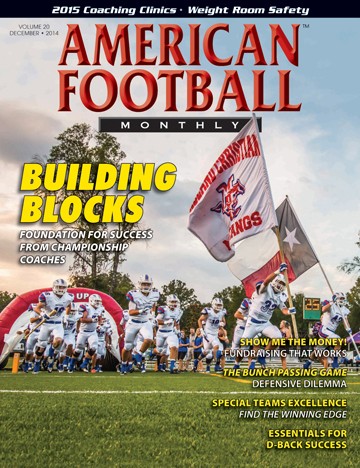Article CategoriesAFM Magazine
|
Special Teams Winning Edge (Part I)by: Brett HickmanSpecial Teams Coach, Gardner-Webb University © More from this issue I am a believer in our special teams philosophy because we have seen great success in every major category at two different universities – North Greenville University and Gardner-Webb – at two different levels of college football. My first few years as a special teams coordinator was trial by fire. But what I did learn is that you have to completely embrace the role because all great programs are sound and explosive in the kicking game and you have a chance to create a culture of toughness that can quickly spread to an entire team. At Gardner-Webb, we inherited a very difficult situation. The 2012 GWU team finished in the bottom third of four major FCS categories including rankings of 110th in punt coverage and 119th in kickoff coverage. The program’s attitude toward special teams needed a complete overhaul a....The full article can only be seen by subscribers.
|
|
|||||||
| HOME |
MAGAZINE |
SUBSCRIBE | ONLINE COLUMNISTS | COACHING VIDEOS |
Copyright 2025, AmericanFootballMonthly.com
All Rights Reserved





